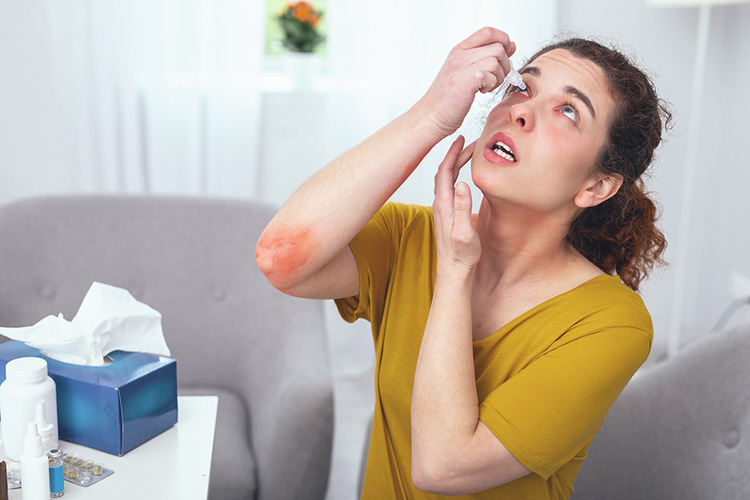Guide to eye injury first aid
 Up to 50,000 eye injuries occur in Australian workplaces each year, with 60 per cent of those in construction, mining and agriculture, forestry and fishing industries, according to Commcare.
Up to 50,000 eye injuries occur in Australian workplaces each year, with 60 per cent of those in construction, mining and agriculture, forestry and fishing industries, according to Commcare.
While eye injury prevention is the priority, in the event an eye injury does occur the following first aid guide may help you provide care or minimise the extent of the injury.
Eye Injury First Aid:
While first aid treatment depends on the type of eye injury, there are a few rules that apply universally.
Patients or first aid providers must not touch the injured eye or any contact lens, rub the eye, remove any objects penetrating the eye or apply pressure when bandaging the eye.
Embedded objects:
If someone has a foreign body in their eye, it is suggested they blink several times to see if the object will come out on its own. If it’s still there after several attempts, stop blinking to prevent scratching the eye.
Check whether the object is visible on the white part of the eye. If it isn’t clearly visible or is over the coloured part of the eye, do not try to remove the object.
Next, try washing the object out with clean, flowing water or sterile saline while tilting your or your patient’s head to aid flushing.
If the foreign body remains, cover the eye loosely with a clean pad and see a doctor.
Scratches:
To treat a scratched eye, flush any dust or loose particles out with clean water or sterile saline and keep the eye closed to prevent further damage. Alternatively, use an eye shield or loosely cover it with a paper cup. Depending on the severity of the scratch you may want to see a doctor.
Punctures:
Call an ambulance (triple zero) immediately if you or someone else has punctured their eye.
Then place thick pads above and below the injured eye or cover it with a paper cup to prevent further damage. Bandage the pads in place so that they don’t put pressure on the eyelids.
Chemical burns:
If you or a co-worker gets chemicals such as acids, lye or pesticides in an eye it is critical it is flushed out immediately with clean, flowing water for at least 15 to 20 minutes, regardless of whether or not instant redness, stinging or burning is experienced.
This can be done by placing your head under a tap or using automatic eye-wash stations.
Then, read the label on the container for any first aid instructions and keep it for the doctor.
Finally, place an eye pad or light, clean dressing over the injured eye and ensure an ambulance has been called. Make sure any medical staff know exactly what kind of substance got in their eye and what you’ve done so far.
Welding flashes:
UV light generated from electric welding can cause painful burns known as ‘welder’s flash’ or ‘arc eye’.
While Safe Work Australia (SWA) suggests that the eye should be checked for foreign objects before a flash is considered, you should cover the eye and seek urgent medical help if you suspect a flash burn or if the patient is experiencing blurred vision, glare or pain.
Smoke exposure:
Exposure to smoke can cause eye irritation and burning. To help rid eyes of any smoke particles, Healthy WA suggest washing smoke-exposed eyes with sterile saline or cold tap water and getting medical help if necessary.
The importance of having an eye safety program:
An eye safety program should be introduced anywhere workers are at risk of eye injuries. The aim of this program should be to protect workers’ eyes by eliminating or controlling hazards using the hierarchy of control and having them wear personal protective equipment (PPE) where necessary. It should include a critical examination of working conditions as well as the building’s layout and processes.
Where chemicals are present, automatic eye showers or eye-wash bottles must be available at strategic locations as any delay in moving an injured person to receive first aid elsewhere could mean the difference between saving or losing the worker’s sight.
A first aid risk assessment will help ensure the right equipment, layout and knowledge is in place.
Safe Work Australia’s First Aid in the Workplace Code of Practice recommends that high risk workplaces – in which most blue collar industries fit – has one ‘first aider’ for every 25 workers.
It also states that every business must have at least one first aid kit, the contents of which should be based upon a risk assessment.
Eye safety PPE:
While PPE sits at the bottom of the hierarchy of control , it is the critical last line of defence and must be appropriately selected, individually fitted and workers should be trained in correct use and maintenance. Typical eye safety PPE includes safety spectacles, goggles, hoods and helmets.








































































